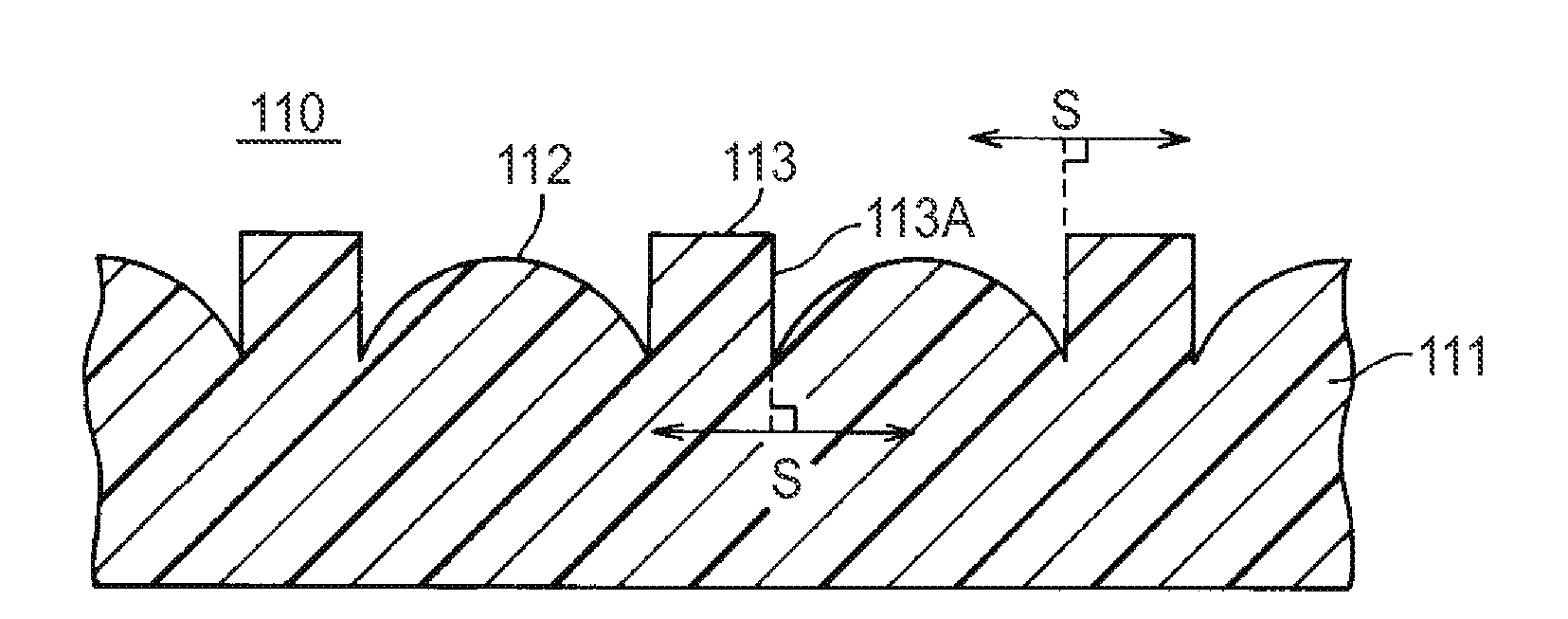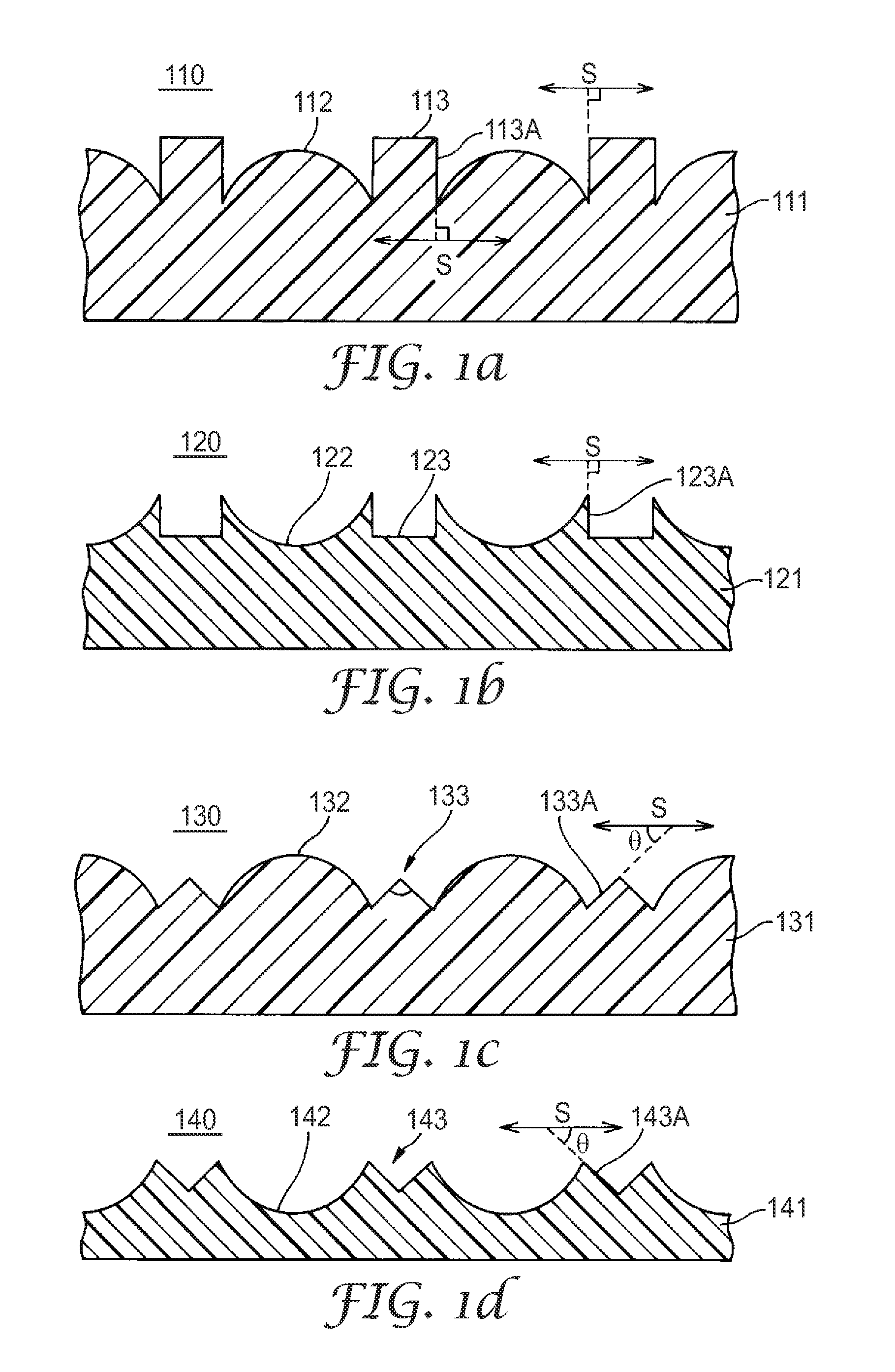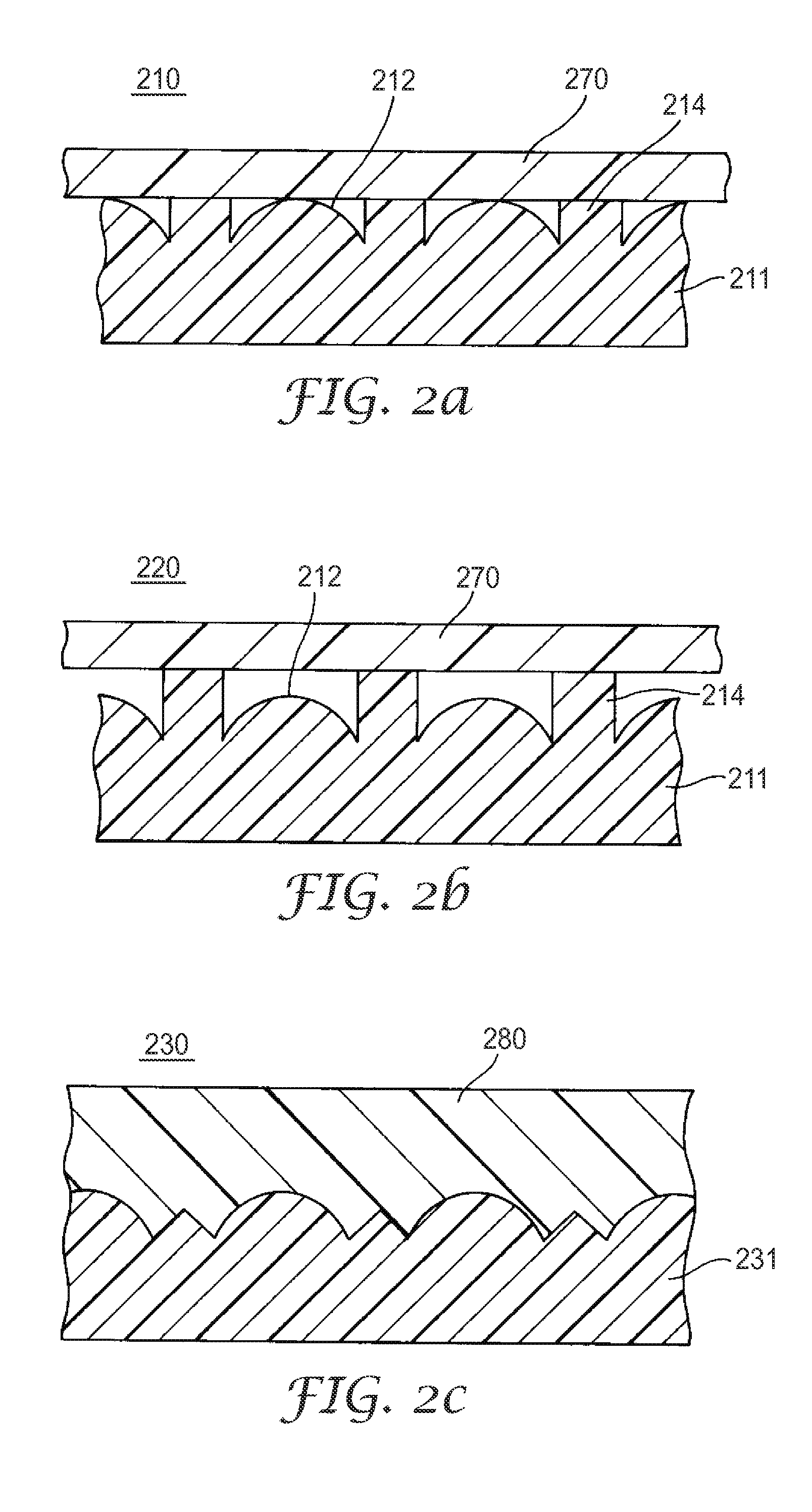Optical members and devices employing the same
a technology of optical members and devices, applied in the field of optical members, to achieve the effect of improving light utilization efficiency
- Summary
- Abstract
- Description
- Claims
- Application Information
AI Technical Summary
Benefits of technology
Problems solved by technology
Method used
Image
Examples
example 1-1
[0222]An optical member with a concave lens array was fabricated under the following conditions.
[0223]An ultraviolet curing resin was used as the hardenable fluid. The ultraviolet curing resin was prepared by mixing 90 parts by weight of a polyester-based urethane acrylate monomer (trade name: EBECRYL8402 by Daicel-Cytec Co., Ltd.), 10 parts by weight of unsaturated fatty acid hydroxyalkyl ester-modified E-caprolactone (trade name: Placcel™ FA2D by Dicel Chemical Industries, Ltd.) and 1 part by weight of a photopolymerization initiator (trade name: Irgacure 2959, CIBA Specialty Chem. Inc.).
[0224]A polypropylene base mold was also prepared by the following method. First, grooves were formed in a copper sheet surface with a cutting machine. The copper sheet was then immersed in an oxidizing agent for oxidation of the copper sheet surface, and then an electrodeposition process was used to form a nickel layer on the oxidized copper sheet surface. Next, the nickel layer was removed (rele...
example 1-2
[0230]An optical member with a convex lens array was fabricated under the following conditions.
[0231]As the hardenable fluid there was prepared a 20 wt% aqueous solution of PVA-217, obtained by mixing 20 parts by weight of a water-soluble resin, polyvinyl alcohol (commercially available under the trade designation KURARAY POVAL PVA-217 from Kuraray Co., Ltd.), and 80 parts by weight of distilled water. The structure with the arranged pattern of concavities produced in Example 1-1 was used as the second mold. The 20 wt % aqueous solution of PVA-217, as a hardenable fluid, was dropped onto the arranged pattern of concavities on the second mold. Next, in order to prevent gas bubble defects, the surrounding area was degassed by pressure reduction for about 15 minutes at below 1000 Pa. Next, a knife coater was used to spread out the hardenable fluid, to obtain a coating layer with a thickness of 200 μm. The obtained coating layer was dried for 2 hours in an oven at 60° C., and then furth...
example 1-3
[0232]An optical member with a concave lens array was fabricated.
[0233]Three different optical members were fabricated using the same ultraviolet curing resin as in Example 1-1, but under hardening conditions of 0 minutes, 30 minutes and 60 minutes as the time until the beginning of hardening, that is the time after coating of the ultraviolet curing resin until ultraviolet irradiation was conducted. The other production conditions were the same as in Example 1-1. The three different optical members obtained in this manner were photographed with a scanning electron microscope (VE-7800, product of Keyence Corp.) and the mean diameter of the concave lenses was measured from the image (hereinafter referred to as “SEM image”). The maximum diameter of the concave lenses was measured at 5 locations in the SEM image in which the obtained concave lenses were observed from above almost vertically, and the average value was determined as the mean diameter of the concave lenses.
[0234]With 0 min...
PUM
| Property | Measurement | Unit |
|---|---|---|
| Temperature | aaaaa | aaaaa |
| Temperature | aaaaa | aaaaa |
| Temperature | aaaaa | aaaaa |
Abstract
Description
Claims
Application Information
 Login to View More
Login to View More - R&D
- Intellectual Property
- Life Sciences
- Materials
- Tech Scout
- Unparalleled Data Quality
- Higher Quality Content
- 60% Fewer Hallucinations
Browse by: Latest US Patents, China's latest patents, Technical Efficacy Thesaurus, Application Domain, Technology Topic, Popular Technical Reports.
© 2025 PatSnap. All rights reserved.Legal|Privacy policy|Modern Slavery Act Transparency Statement|Sitemap|About US| Contact US: help@patsnap.com



